Photo

Horse Figurine with Looped Legs, mid 6th century BC, Cleveland Museum of Art: Greek and Roman Art
Size: Overall: 3.6 x 5.8 cm (1 7/16 x 2 5/16 in.)
Medium: bronze
https://clevelandart.org/art/2000.204
109 notes
·
View notes
Photo

The Vision of Saint Jerome, Giovanni Battista Langetti , c. 1660, Cleveland Museum of Art: European Painting and Sculpture
Jerome (c. AD 347–420) studied Greek and Latin literature in Rome, but eventually pursued theology, perceiving his conduct as corrupt and sinful. Around AD 374, Jerome had a vision of the Last Judgment in which an angel called him to task for his transgressions. Jerome then withdrew from society, learned Hebrew, and studied the Gospels, which led to his influential translations of the Bible. Langetti here follows a convention by depicting Jerome's vision after he retreated from the world. Working in the northern Italian port of Genoa, Langetti absorbed Caravaggio's impact, seen in the composition's naturalistic bodies and dramatic light.
Size: Framed: 238 x 187 x 13 cm (93 11/16 x 73 5/8 x 5 1/8 in.); Unframed: 200.2 x 149.2 cm (78 13/16 x 58 3/4 in.)
Medium: oil on canvas
https://clevelandart.org/art/1951.334
56 notes
·
View notes
Photo
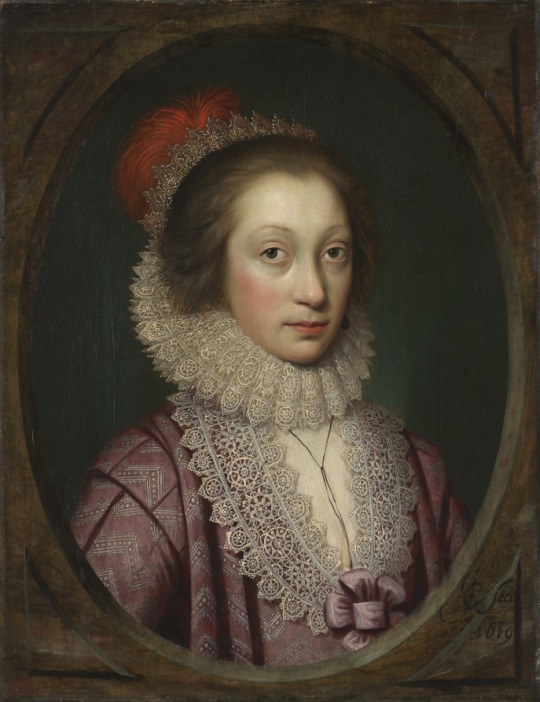
Portrait of a Woman, possibly Elizabeth Boothby, Cornelis Jonson , 1619, Cleveland Museum of Art: European Painting and Sculpture
The woman in this portrait was recently identified as Elizabeth Boothby (1590–1658), daughter of a prominent London merchant. The jewels in her hair, the silver thread and expensive lace adorning her silk gown, and even the faux marble oval surrounding her image are all signs of wealth and status. Although painted in England, this portrait reflects the traditions of Dutch portraiture, evidence of the fluid artistic exchange that existed between the two countries. Jonson was born in London, received his artistic training in Amsterdam, and spent the last 20 years of his career in the Dutch Republic.
Size: Framed: 93.5 x 78 x 5 cm (36 13/16 x 30 11/16 x 1 15/16 in.); Unframed: 65.7 x 56 cm (25 7/8 x 22 1/16 in.)
Medium: oil on wood
https://clevelandart.org/art/1973.185
9 notes
·
View notes
Photo

Self-Portrait, Vincent van Gogh, 1887, Art Institute of Chicago: European Painting and Sculpture
In 1886 Vincent van Gogh left his native Holland and settled in Paris, where his beloved brother Theo was a dealer in paintings. Van Gogh created at least twenty-four self-portraits during his two-year stay in the energetic French capital. This early example is modest in size and was painted on prepared artist’s board rather than canvas. Its densely dabbed brushwork, which became a hallmark of Van Gogh’s style, reflects the artist’s response to Georges Seurat’s revolutionary pointillist technique in A Sunday on La Grande Jatte—1884. But what was for Seurat a method based on the cool objectivity of science became in Van Gogh’s hands an intense emotional language. The surface of the painting dances with particles of color—intense greens, blues, reds, and oranges. Dominating this dazzling array of staccato dots and dashes are the artist’s deep green eyes and the intensity of their gaze. “I prefer painting people’s eyes to cathedrals,” Van Gogh once wrote to Theo. “However solemn and imposing the latter may be—a human soul, be it that of a poor streetwalker, is more interesting to me.” From Paris, Van Gogh traveled to the southern town of Arles for fifteen months. At the time of his death, in 1890, he had actively pursued his art for only five years. Joseph Winterbotham Collection
Size: 41 × 32.5 cm (16 1/8 × 12 13/16 in.)
Medium: Oil on artist’s board, mounted on cradled panel
https://www.artic.edu/artworks/80607/
126 notes
·
View notes
Photo
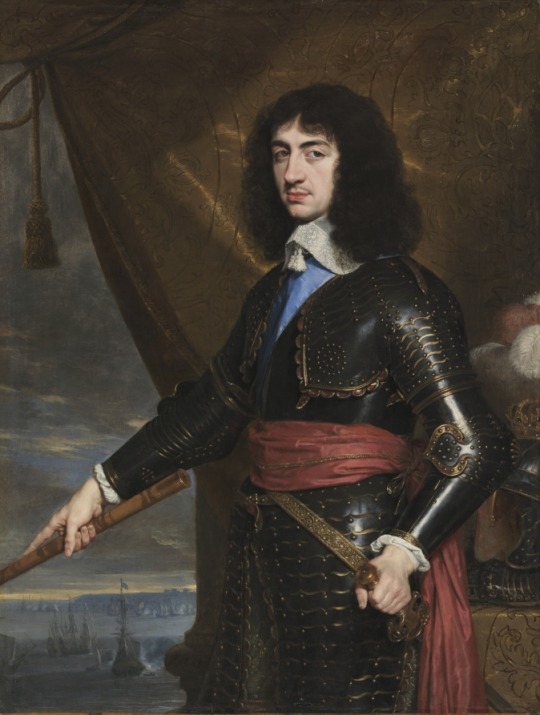
Portrait of King Charles II of England, Philippe de Champaigne , 1653, Cleveland Museum of Art: European Painting and Sculpture
Charles II (1630–1685) fled England in 1651 during the English civil war and commissioned this portrait during his exile in France. Charles II never fought on the battlefield, but he was the last British monarch to wear a full suit of armor, which represented his rank and status. The king gestures to the sea beyond the Dover cliffs, and the waiting fleet reveals his intention to return to England, which he did in 1660.
Size: Framed: 182 x 141 x 15 cm (71 5/8 x 55 1/2 x 5 7/8 in.); Unframed: 129.5 x 97.2 cm (51 x 38 1/4 in.)
Medium: oil on canvas
https://clevelandart.org/art/1959.38
26 notes
·
View notes
Photo
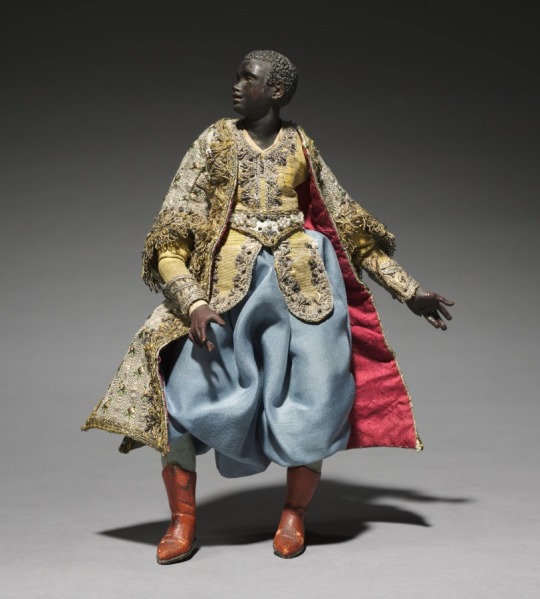
Figure from a Crèche: Attendant of the Magi, 1780-1830, Cleveland Museum of Art: European Painting and Sculpture
The practice of creating scenes of the Nativity for the home dates from the early 1700s in Italy, where people began to set up doll-like figures of about a foot or less in height. The custom was particularly popular in Naples around 1800, where crèche scenes (crèche means cradle, or crib) included many figures, whose heads and hands of painted terracotta, stuffed cloth bodies, and clothing adapted from contemporary local costumes gave them an amazingly realistic character. Representations of the birth of Jesus can be traced to the first few centuries of Christianity. Both living creatures and sculptural depictions of them were used from early times. By the late middle ages it was customary to create life-size figures of wood or stone, naturalistically painted, to represent the characters who participated in the events of Jesus's early life. These sculptures were then arranged in scenes illustrating one or both of the most important of these events, the Adoration of the Shepherds and the Adoration of the Magi-the three kings from the East who came to pay homage to the Christ child. Used in churches, these large figures were especially popular in Italy, Central Europe, Spain, and Portugal. This Object in Focus presentation was organized by Henry Hawley, Curator of Renaissance and Later Decorative Arts and Sculpture.
Size: Overall: 21.7 cm (8 9/16 in.)
Medium: painted wood and terracotta with various textiles
https://clevelandart.org/art/1972.368.7
14 notes
·
View notes
Photo
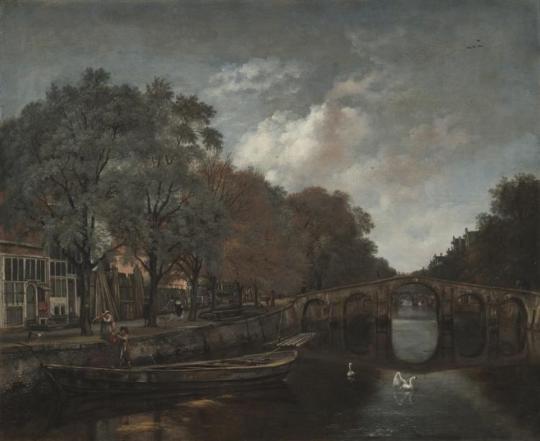
Herengracht, Amsterdam, Jan Wijnants , c. 1661, Cleveland Museum of Art: European Painting and Sculpture
This painting is the first depiction of Amsterdam in which a canal is given prominence. Flanked by picturesque, tree-lined avenues and exquisite mansions, the Herengracht (Gentleman's Canal) was one of Amsterdam's most important waterways. The precision with which Jan Wijnants portrayed the topography of the city enables the viewer to witness the development of this location. To the left of the canal, Wijnants depicted a lumber yard, on which, in 1662, the architect Philip Vingoboons built four houses for the merchant Jacob Cromhout. Furthermore, soon after Wijanants completed this painting the canal was expanded.
Size: Framed: 87 x 101 x 9.2 cm (34 1/4 x 39 3/4 x 3 5/8 in.); Unframed: 67.2 x 81.6 cm (26 7/16 x 32 1/8 in.)
Medium: oil on canvas
https://clevelandart.org/art/1964.419
6 notes
·
View notes
Photo
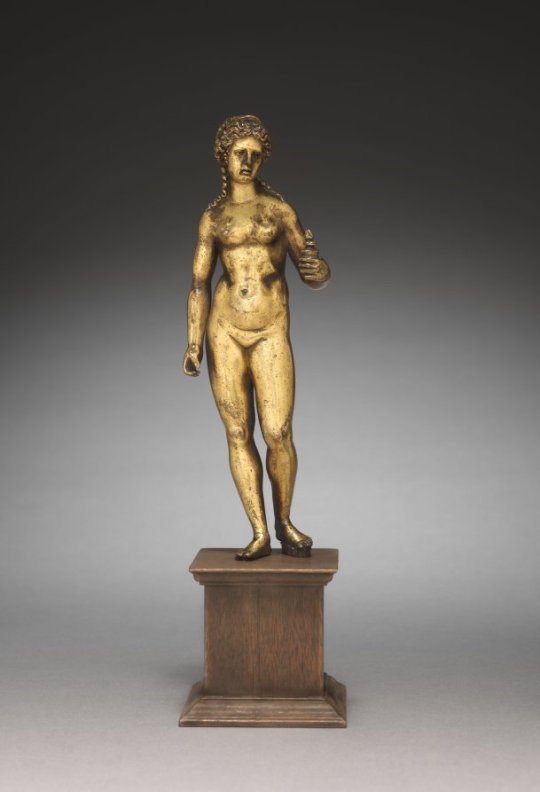
Venus with a Burning Urn, c. 1500-1520, Cleveland Museum of Art: European Painting and Sculpture
Size: Overall: 19.6 x 6.3 x 4 cm (7 11/16 x 2 1/2 x 1 9/16 in.); with base: 28.6 x 7 x 7 cm (11 1/4 x 2 3/4 x 2 3/4 in.)
Medium: gilt bronze
https://clevelandart.org/art/1948.171
17 notes
·
View notes
Photo

A Lady in Black, Henry Wolf, 1910, Smithsonian: American Art Museum
Medium: wood engraving on paper
http://americanart.si.edu/collections/search/artwork/?id=28018
65 notes
·
View notes
Photo
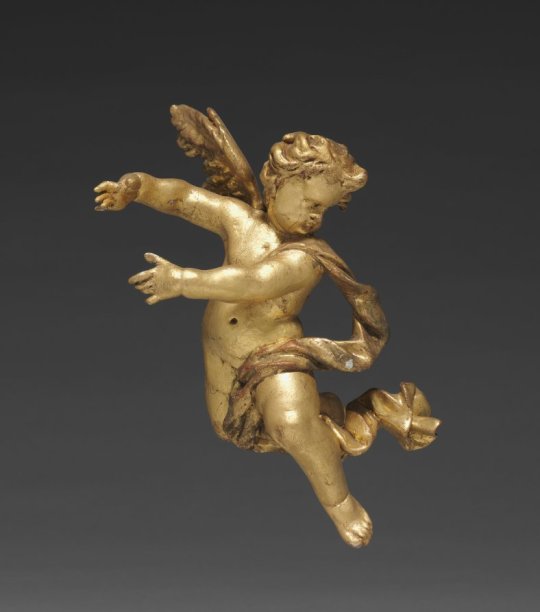
Altarpiece with Relics - Putto with column, upper right, Joseph Matthias Götz , 1735-1740, Cleveland Museum of Art: European Painting and Sculpture
Medium: gilded wood, with relics in niches: gilded wood, mother-of-pearl, ebony, red silk, gold wire, seed pearls, rock crystal, pen and ink on paper
https://clevelandart.org/art/1964.357.d
21 notes
·
View notes
Photo

Portrait of a Musician, attributed to Girolamo Mazzola Bedoli, Italian, c.1505–1569/70, c.1540, Saint Louis Art Museum: European Art to 1800
https://www.slam.org/collection/objects/26860/
51 notes
·
View notes
Photo

Madonna and Child, Antonio Rossellino , c. 1475, Cleveland Museum of Art: European Painting and Sculpture
Antonio Rossellino was the youngest and most notable member of a family of sculptors and architects prominent in Florence during the 1440s and 1450s. He trained in the family studio under his oldest brother, Bernardo, and developed a lively sculptural style noted primarily for his sensitively rendered marble figures of youths, as well as reliefs of the Madonna and Child. This sculpture of the standing Madonna and Child possibly represents a commission for one of Florence's many chapels, and was probably completed by the artist's workshop under his direction. Antonio died of the plague around 1479.
Size: Overall: 121.9 cm (48 in.)
Medium: polychromed terracotta
https://clevelandart.org/art/1942.780
38 notes
·
View notes
Photo
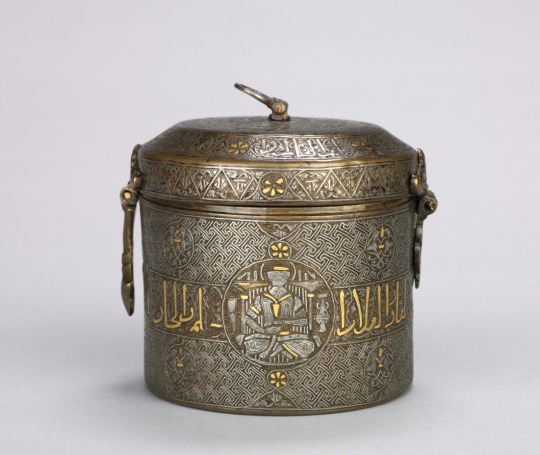
Luxury Inlaid Container, c. 1250-1350, Cleveland Museum of Art: Islamic Art
Silver and gold inlay transforms this brass box into a luxury container. Courtiers, birds, and fretwork form the decoration while inscriptions extend good wishes. On the body it reads: “Brilliance, and nobility, and patience, and modesty, and glory, and long life, and piety, and patience.”
Size: Diameter: 11.4 cm (4 ½ in.); Overall: 12 cm (4 ¾ in.); Diameter of box: 10.1 cm (4 in.); Box: 9.7 cm (3 13/16 in.)
Medium: sheet brass, inlaid with silver and gold
https://clevelandart.org/art/1944.482
29 notes
·
View notes
Photo

Fountain of Venus, François Boucher , 1756, Cleveland Museum of Art: European Painting and Sculpture
Lighthearted, erotic decorative schemes remained popular among the French aristocracy throughout the 1700s. In this painting, part of the playfulness comes from the way Boucher painted some of the figures in gray, as if made of stone, while the others are fully human. The artist toyed with the boundaries of painting and sculpture, as well as fiction and reality.The original purpose of this painting remains unclear. While it may have been exhibited as an independent work of art, it probably served initially as a preliminary design for a tapestry.
Size: Framed: 246 x 228.5 x 6.5 cm (96 7/8 x 89 15/16 x 2 9/16 in.); Unframed: 233 x 215 cm (91 3/4 x 84 5/8 in.)
Medium: oil on canvas
https://clevelandart.org/art/1979.55
16 notes
·
View notes
Photo

Summer, Jean-Baptiste Pater, c. 1720-1736, Cleveland Museum of Art: European Painting and Sculpture
Spring and Summer are two scenes from a series of the four seasons. Both Autumn and Winter are now in the Museu d'Art de Catalunya in Barcelona. These landscapes were originally a part of a screen or a decorative panel, as indicated by their floral borders and oval shape. The setting of Spring is believed to be the grounds of Montmorency, the country estate of Pierre Crozat (1665-1740), a wealthy financier and art collector in early eighteenth-century Paris. The walkway is very similar to other scenes by Watteau known to depict the estate of his close friend and patron Crozat. As a student of Watteau, Pater would have also been familiar with this setting. Summer counters Spring's aristocratic leisure by depicting rural labor. However, befitting the work's decorative origins, Pater's scene belongs to the tradition of the timeless pastoral. More idyllic than a statement about class differences, the reapers peacefully gather sheaves of wheat as shepherds rest with their flocks in the foreground.
Size: Framed: 76.5 x 66 x 9 cm (30 1/8 x 26 x 3 9/16 in.); Unframed: 65.3 x 53.5 cm (25 11/16 x 21 1/16 in.)
Medium: oil on canvas
https://clevelandart.org/art/1952.540
6 notes
·
View notes
Photo
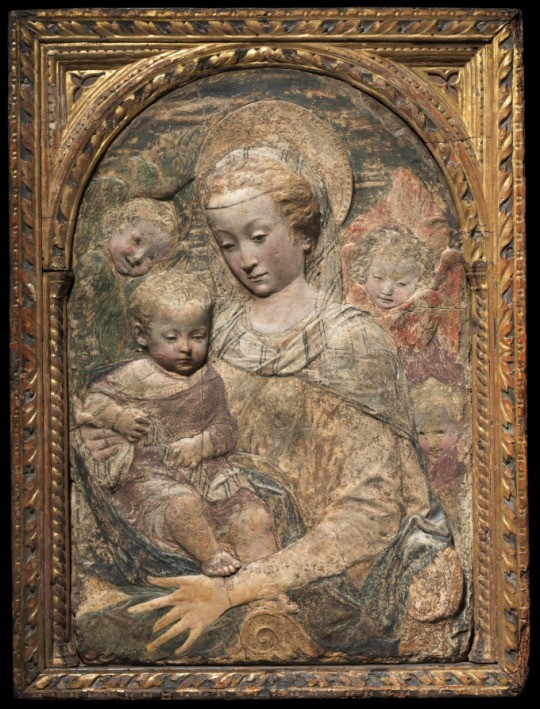
Madonna and Child, Antonio Rossellino, c. 1470, Cleveland Museum of Art: European Painting and Sculpture
This relief is one of several such painted stucco replicas cast after the marble original of about 1460-1465 now in the Pierpont Morgan Library, New York. While this example has suffered old and obvious losses, it still conveys the overall composition and some of the subtlety of modelling of the marble. In addition, it retains sufficient portions of its fifteenth-century paint and gilding to suggest a colorfulness and richly decorated surface which the marble was never intended to have, and which connects this work with panel paintings of the time. The gilded wooden frame, not made for this relief, is Venetian and dates to about 1400-1450.
Size: Overall: 83.5 x 65.1 cm (32 7/8 x 25 5/8 in.)
Medium: painted stucco with traces of gilding
https://clevelandart.org/art/1970.44
30 notes
·
View notes
Photo

Figure from a Crèche: Youthful Magus, 1780-1830, Cleveland Museum of Art: European Painting and Sculpture
The practice of creating scenes of the Nativity for the home dates from the early 1700s in Italy, where people began to set up doll-like figures of about a foot or less in height. The custom was particularly popular in Naples around 1800, where crèche scenes (crèche means cradle, or crib) included many figures, whose heads and hands of painted terracotta, stuffed cloth bodies, and clothing adapted from contemporary local costumes gave them an amazingly realistic character. Representations of the birth of Jesus can be traced to the first few centuries of Christianity. Both living creatures and sculptural depictions of them were used from early times. By the late middle ages it was customary to create life-size figures of wood or stone, naturalistically painted, to represent the characters who participated in the events of Jesus's early life. These sculptures were then arranged in scenes illustrating one or both of the most important of these events, the Adoration of the Shepherds and the Adoration of the Magi-the three kings from the East who came to pay homage to the Christ child. Used in churches, these large figures were especially popular in Italy, Central Europe, Spain, and Portugal. This Object in Focus presentation was organized by Henry Hawley, Curator of Renaissance and Later Decorative Arts and Sculpture.
Size: Overall: 36.1 cm (14 3/16 in.)
Medium: painted wood and terracotta with various textiles
https://clevelandart.org/art/1972.368.12
5 notes
·
View notes